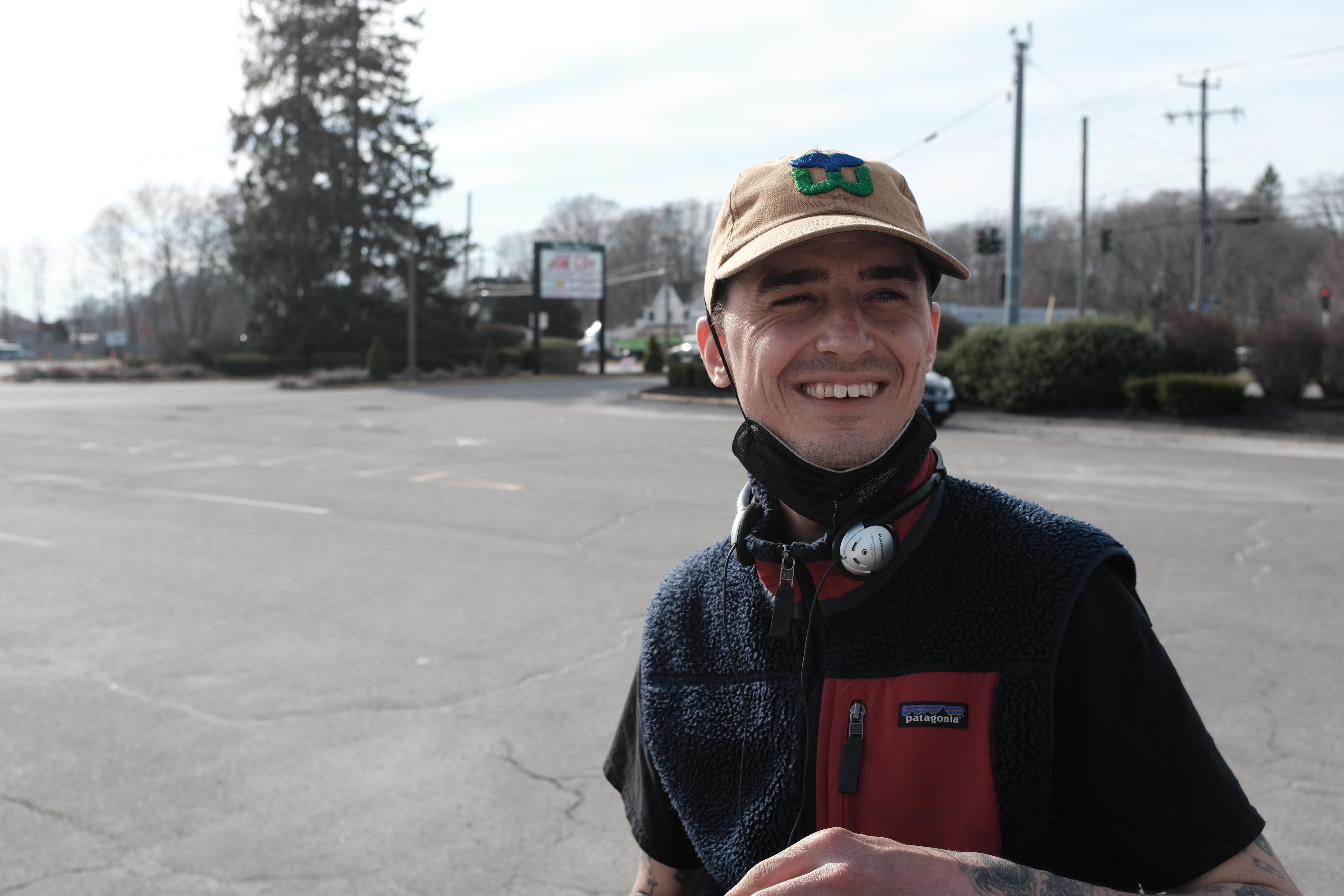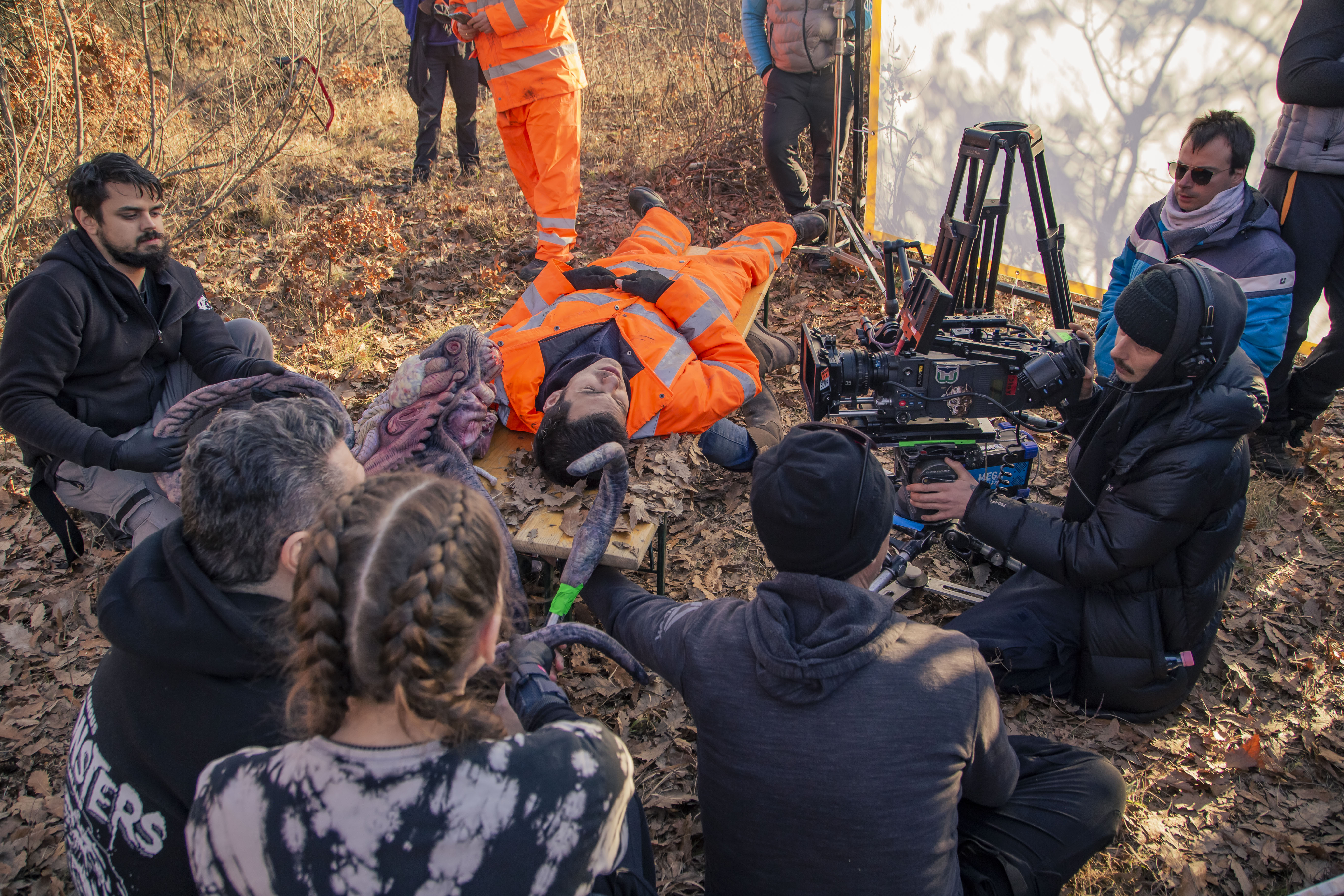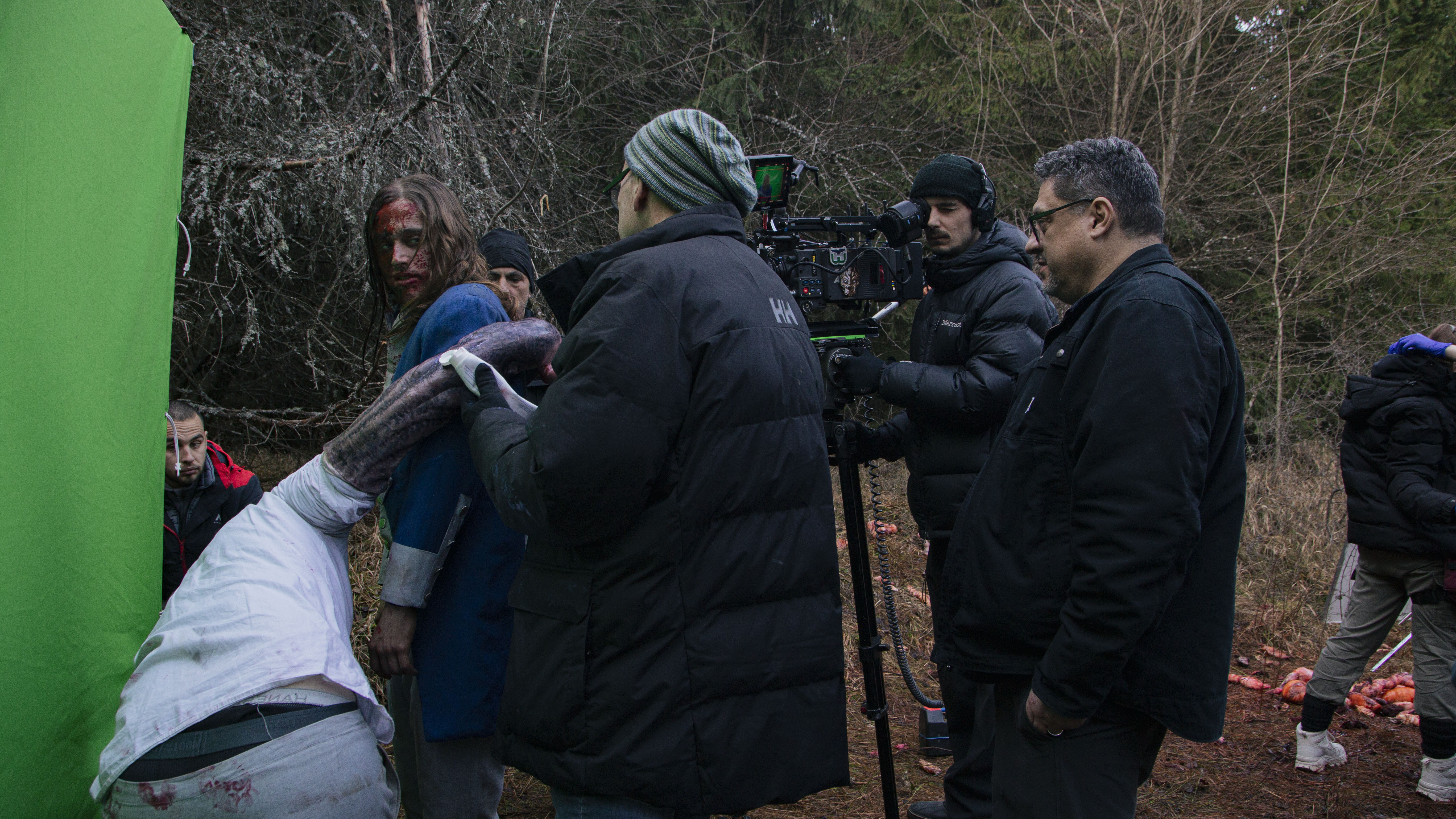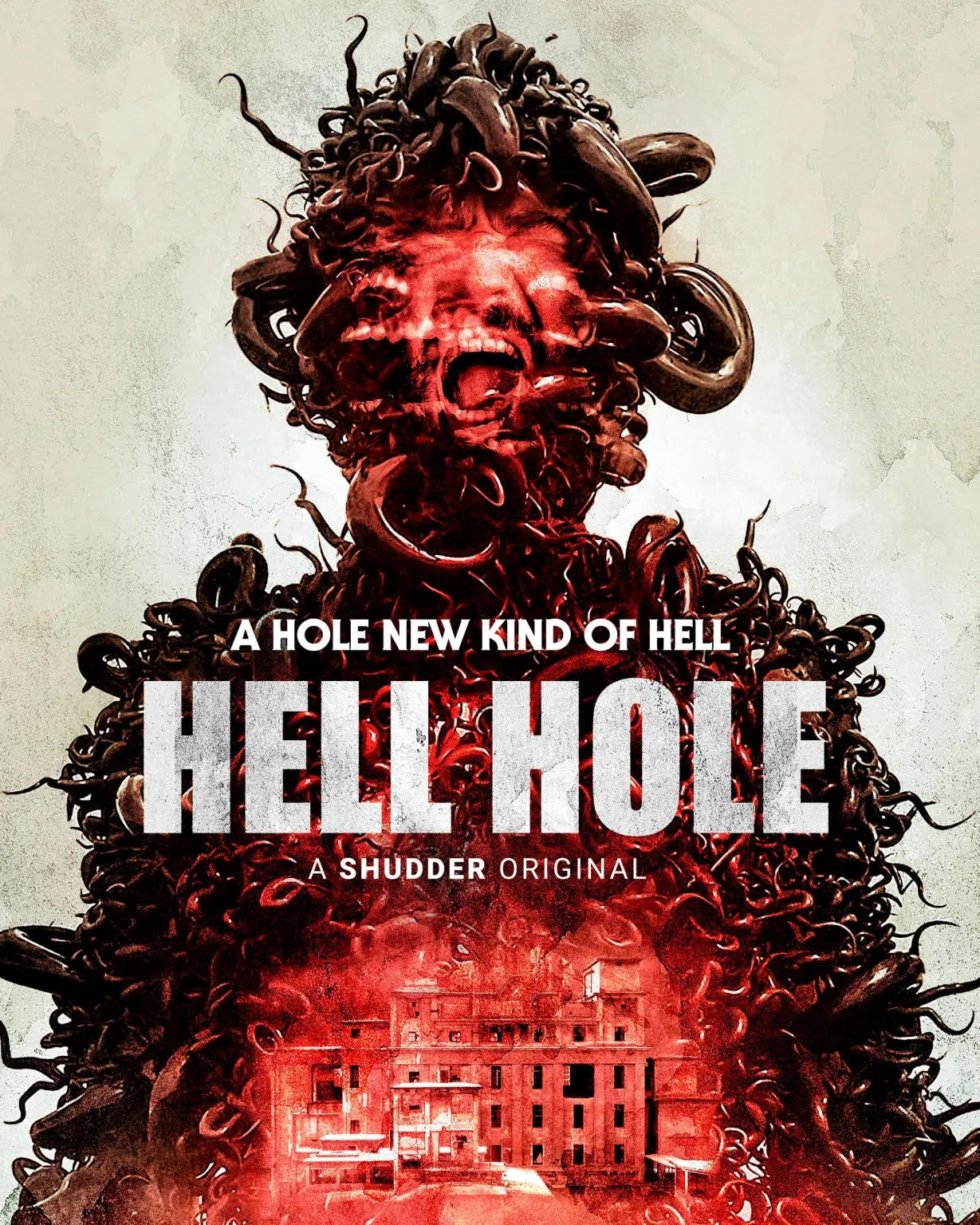‘Hell Hole’ Cinematographer Sean Dahlberg on Shooting the Adams Family’s New Creature Feature

The Adams Family has spent the last decade garnering a name for themselves as some of the best indie horror creatives to watch out for with films like Where the Devil Roams and Hellbender receiving wide acclaim. Their latest feature, Hell Hole, premiered at this year’s Fantasia International Film Festival and recently began streaming on Shudder.
The synopsis reads:
“In the Adams Family’s celebration of the classic creature feature, an American-led fracking crew working deep in the Serbian wilderness find themselves at odds with government-assigned environmental advisors. When they get approval to drill, the workers uncover the unimaginable: a dormant parasitic monster entombed deep in the frozen rock. Now awakened, it tears through the mining facility in search of the perfect host.”
The film was shot in Rtanj, Serbia, which is known for its pyramid-shaped mountains, energy force fields, UFO landings, and a vampire story that predates Dracula. To take full advantage of the scenic locations, the Adams Family brought on DP Sean Dahlberg, who recently shot Eight Eyes there. Sean’s familiarity with Serbia was a major benefit to John and Toby, as he acted somewhat like a bridge between them and the Serbian crew.
When discussing the film and some of the locations Dahlberg says, “The sets we chose to shoot at were incredibly inspiring to work in, they were complete and total characters within the film. John’s main note was that he didn’t want the sets to feel overly “lit”, which agreed with my desire for naturalism within these spaces as well. They had this energy to them, all of the spaces did”.
Dahlberg talks about everything from shooting the lake explosion to why he likes working on horror projects in the interview below.

Dread Central: How did you become involved in Hell Hole? What initially attracted you to the script?
Sean Dahlberg: I became involved in Hell Hole through the producers, Justin Martell and Seager Dixon. I went to film school with Seager who went on to work for Justin’s production company. Seager had known that I owned a super 16mm camera package and that I shot a lot of projects on film. So they brought me out to Serbia for their first feature to be shot on motion picture film stock, Eight Eyes, in 2021. That experience went super well, I really clicked with my Serbian crew and fell in love with the city of Belgrade. So for Hell Hole, I believe I was brought on to sort of be this bridge between these American directors and the Serbian crew. I think the producers also recognized that my background in documentary work could blend well with the Adams family style of filmmaking.
The script was just fun, everything about it! I’d never done a creature feature prior to this, so I was learning every day. I enjoy putting myself into new experiences and working on a plethora of different genres within the filmmaking world, I get to be a sponge and soak everything up. This was just that; I read the script, thought it was fun, and also thought this could be a great opportunity to collaborate with some extremely talented individuals.
DC: Can you talk about the coloring? The film is pretty muted, with pops of color, such as the orange uniforms. Can you talk about the thought process behind this?
SD: For the actual coloring of the film, I was not involved. I try to be as involved as possible from pre-production to post to the completion of a film. But what’s more important to me is giving directors the space to make their films the way they want to. John colored the film himself, so this question would be better answered by him if it relates to the post-production work. On set, I know we specifically chose locations with very muted color palates and shot at a time of year that’s naturally very gray and cold, knowing that these orange uniforms would really pop within these environments.
DC: Hell Hole was directed by John Adams and Toby Poser, who also star in the film. Logistically, did your job change at all because of this?
SD: I don’t believe my job really changed too much because of this. John and Toby are amazing, they really bounce off of each other in opposite ways that totally work. There were scenes in which both of them are together, but I’d say most of the time I always had either John or Toby directing off-camera, at my side.
DC: The sets in the film are very present and grand, almost acting like a character itself. For example, the main light-colored, abandoned looking structure. What were the director’s notes on how they wanted this filmed?
SD: The sets we chose to shoot at were incredibly inspiring to work in, they were complete and total characters within the film. John’s main note was that he didn’t want the sets to feel overly “lit”, which agreed with my desire for naturalism within these spaces. They had this energy to them—all of the spaces did—so we really tried to react to that and supplement as need be so that we could shoot for a 12-hour day. The placement of the camera was very much influenced by John, he had strong ideas compositionally. We’d block a scene out, he’d come in with the major brushstrokes for camera positions and I’d feather in the fine details. It was fun.
DC: What is your favorite shot from the film?
SD: My favorite shot from the film is probably the two-shot from the final bathroom scene. It was the last scene we shot before our Christmas break, so everyone was in very high spirits. I remember loving the natural light coming through the window so all we did was supplement and extend that to certain areas of the room. Subconsciously I think we made decisions within framing that also fuel the narrative. Both of the characters are stuck within the frame of the bathroom door yet there is this beautiful diffused white light coming from the window behind them, a possibility of “something more” perhaps? To me, it’s a really great concluding frame of the film, one that inspires questions.

DC: Did you watch any films to get inspiration for Hell Hole?
SD: I watched Hellbender by the Adams Family in preparation for this film. Unless a director wants to reference certain materials, I tend to not watch many films prior to a shoot. I feel like it could influence my work in a way that I may not want it to. I enjoy staying as true as possible to the script, the directors, the spaces, and the actors within those spaces; a reactionary way of working, really. Not having known of the Adams Family’s previous work, I wanted to watch their latest film to gauge their tone and style. I really loved watching Hellbender, it scared the shit out of me and was a super fun ride. It got me very excited to collaborate with them!
DC: Can you talk about the lake explosion scene? How many takes did you have of this? What was the planning like for this?
SD: The lake explosion scene was insane. I have so much respect for our stunt people and this day they really blew me away (no pun intended). It was the coldest day of the shoot, it must have been -5 or so degrees Fahrenheit with constant wind. By the time we shot in the afternoon, the clouds had broken and it got even colder and windier. The crew had all their winter gear on; ski masks, gloves, eye protection. People were huddled in groups with blankets, hugging for warmth—it was that cold. I actually couldn’t believe these guys were going to perform the lake stunt, given how cold it actually was. They got in the water, though, and nailed the stunt, it was super impressive.
If memory serves me correctly, we only did two takes. In the first take, I don’t think the stunt diver sunk quite fast enough, so we made some adjustments and got in on the second go. The planning for this happened sort of on set. We tested the underwater cannon, the divers tested the water, and how to make the diver sink all on the day.
DC: A lot of the shots in the film are from lower angles. Did you do this with the viewpoint of the parasite in mind?
SD: I think subconsciously we were always looking for places to put the camera that felt sort of in the world of this parasite. This monster that’s mostly looking up at its subjects. We definitely wanted to keep reminding the viewers that this parasite is looming, even in more subtle ways like framing. I tend to place the camera slightly below the subject a lot in my own work, I feel it makes a subject look slightly powerful.

DC: Hell Hole isn’t your first horror film. Do you feel that the horror genre allows for more experimentation than other genres?
SD: Hell Hole is not my first horror film nor is it my first I’ve shot in Serbia. I lensed Eight Eyes (coming to Shudder soon), previously, which was another incredible experience. I think horror can allow for more fun and experimentation than other genres. Making a horror film is fun, I feel like everyone on set is having fun with the material. It’s a much different feeling than shooting a dramatic film, which could feel much more precious and serious in ways.
Horror needs to have rules or else it fails in my opinion; ultimately you need to scare people and I think there are a finite amount of ways to do that. Because of this so-called “box” we are put in as filmmakers who work in horror, it ultimately leads to new paths of discoveries, and new ways to solve old problems. I feel like when there are limitations you almost have more tools at your disposal as a filmmaker.
Hell Hole is streaming now on Shudder.

Categorized:Interviews
